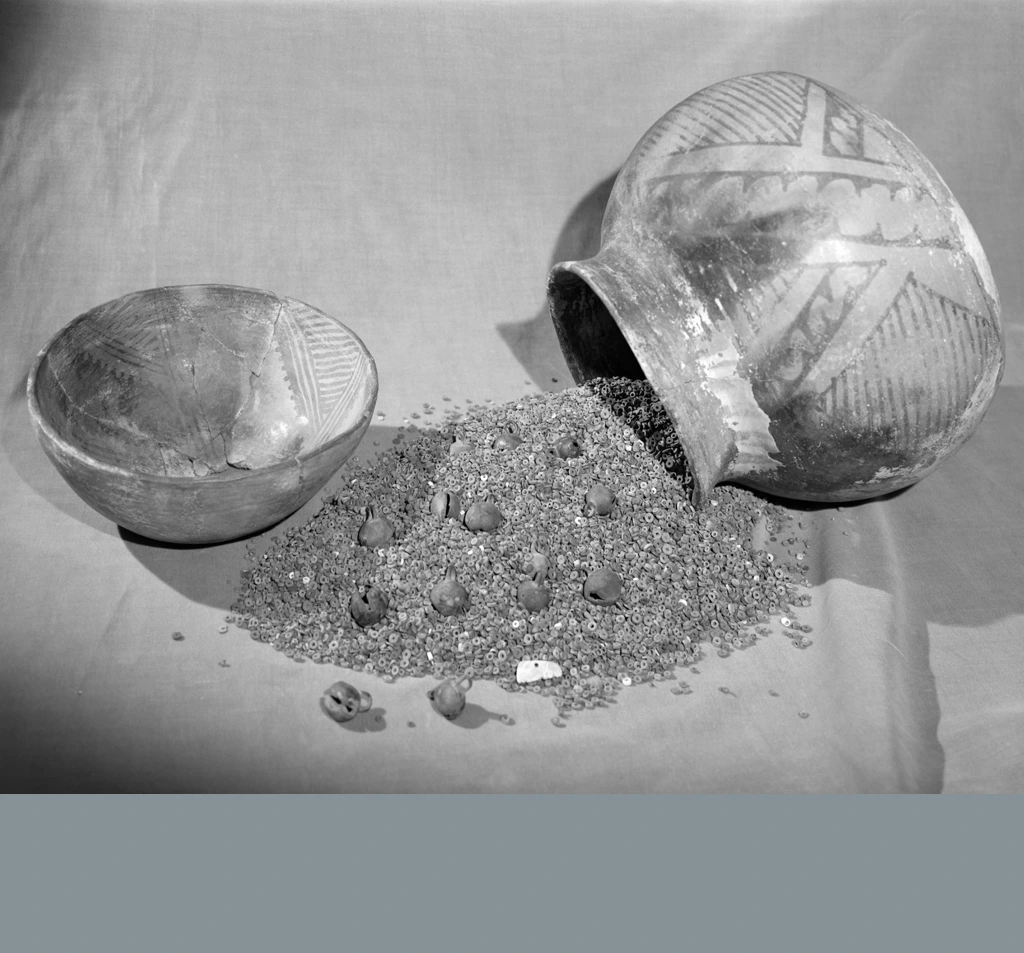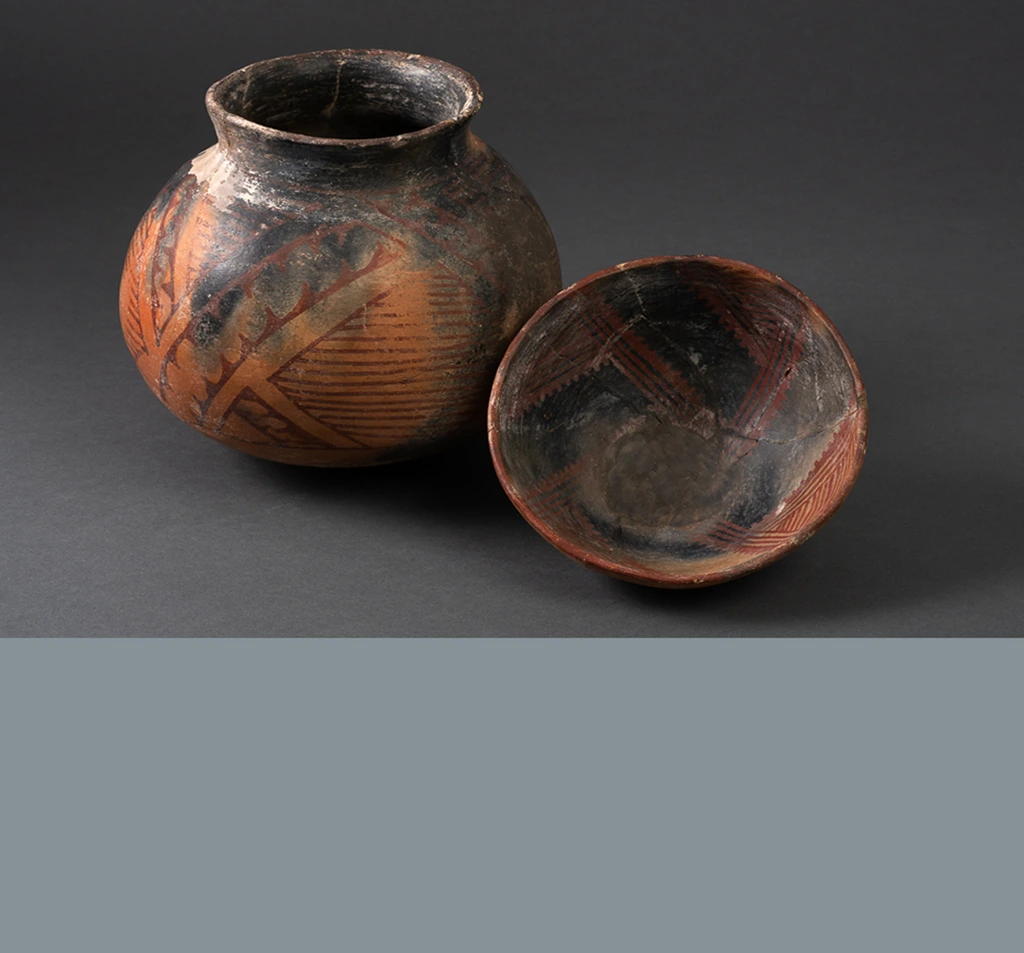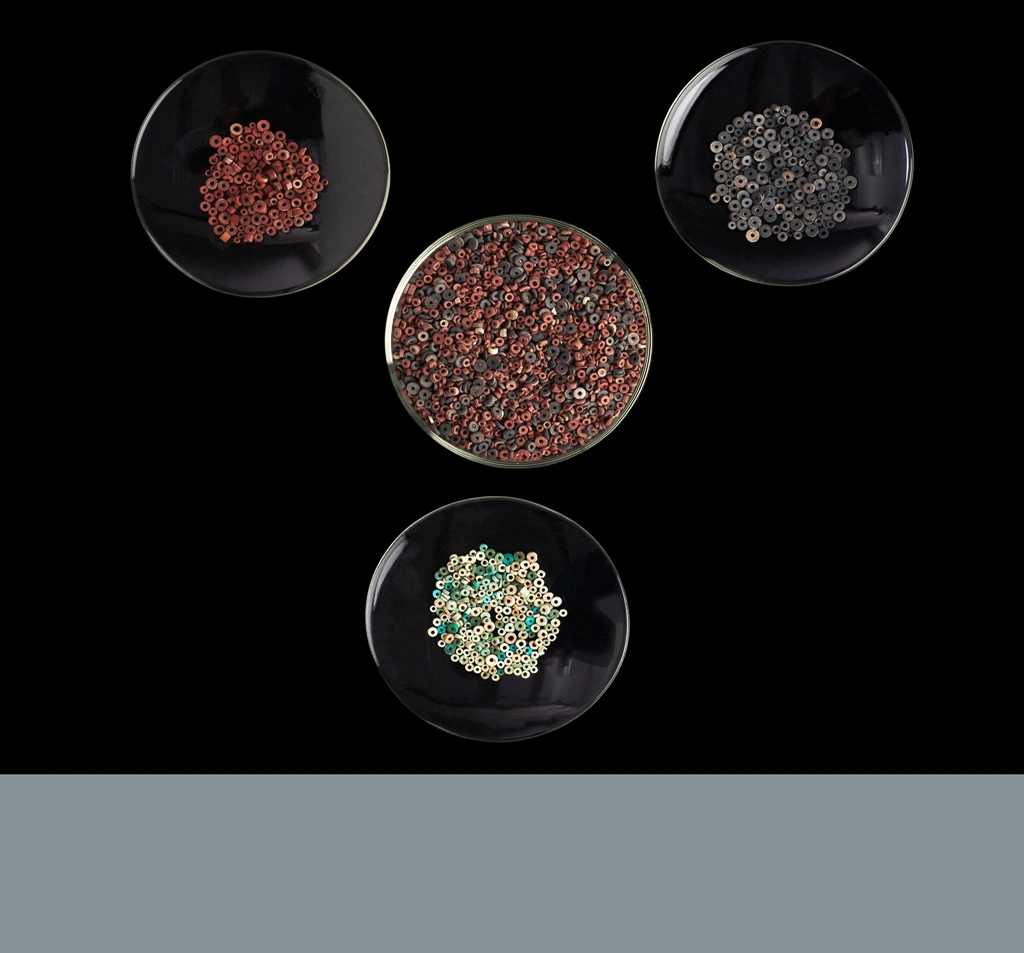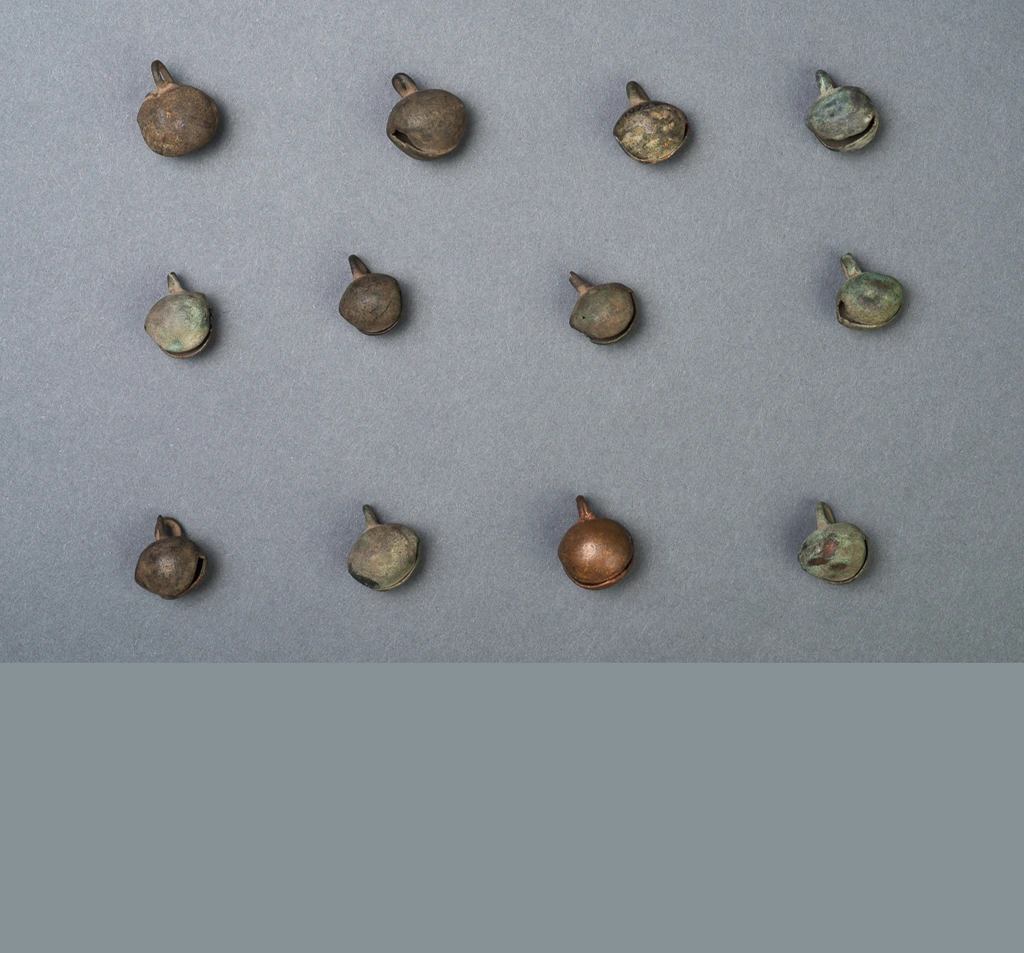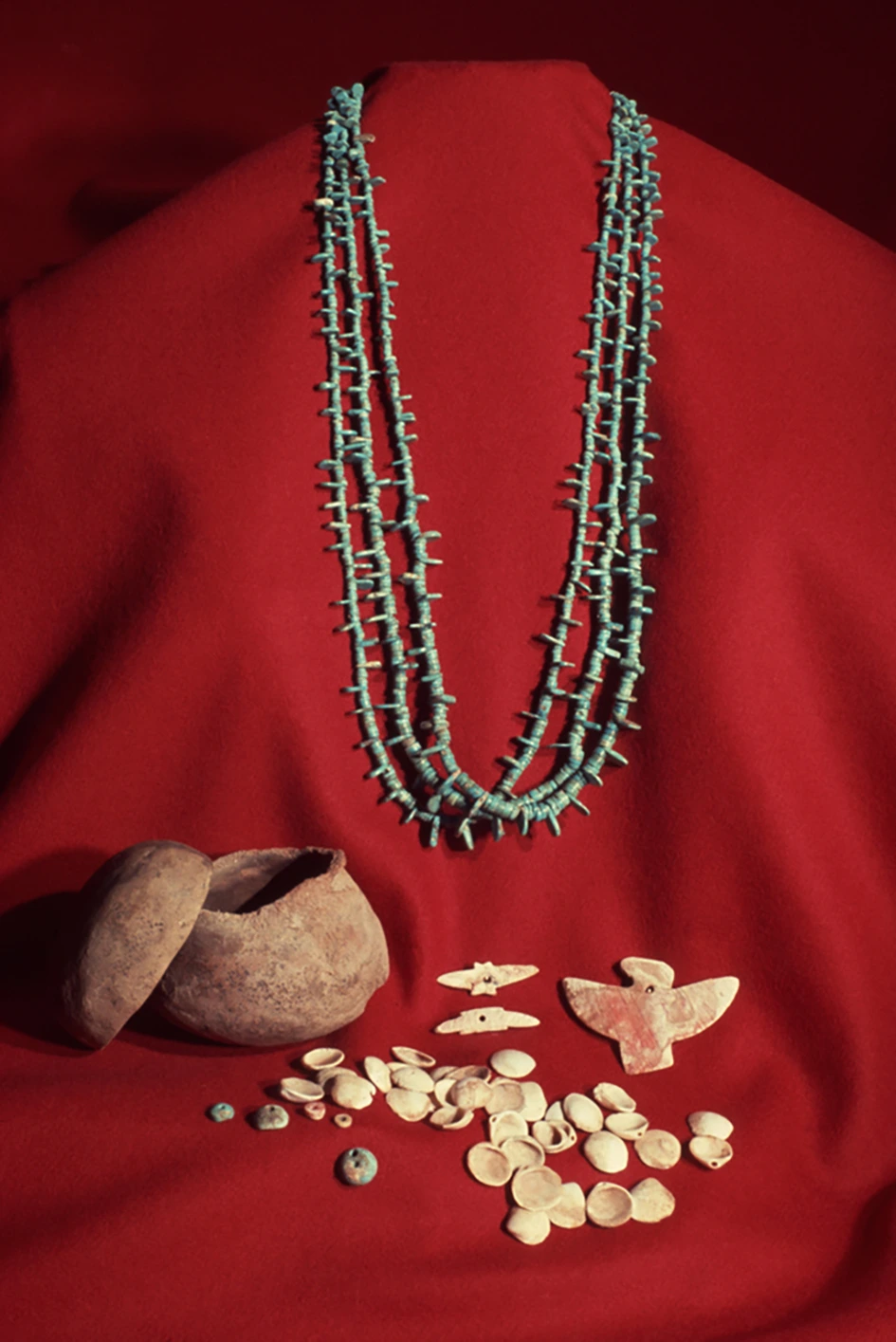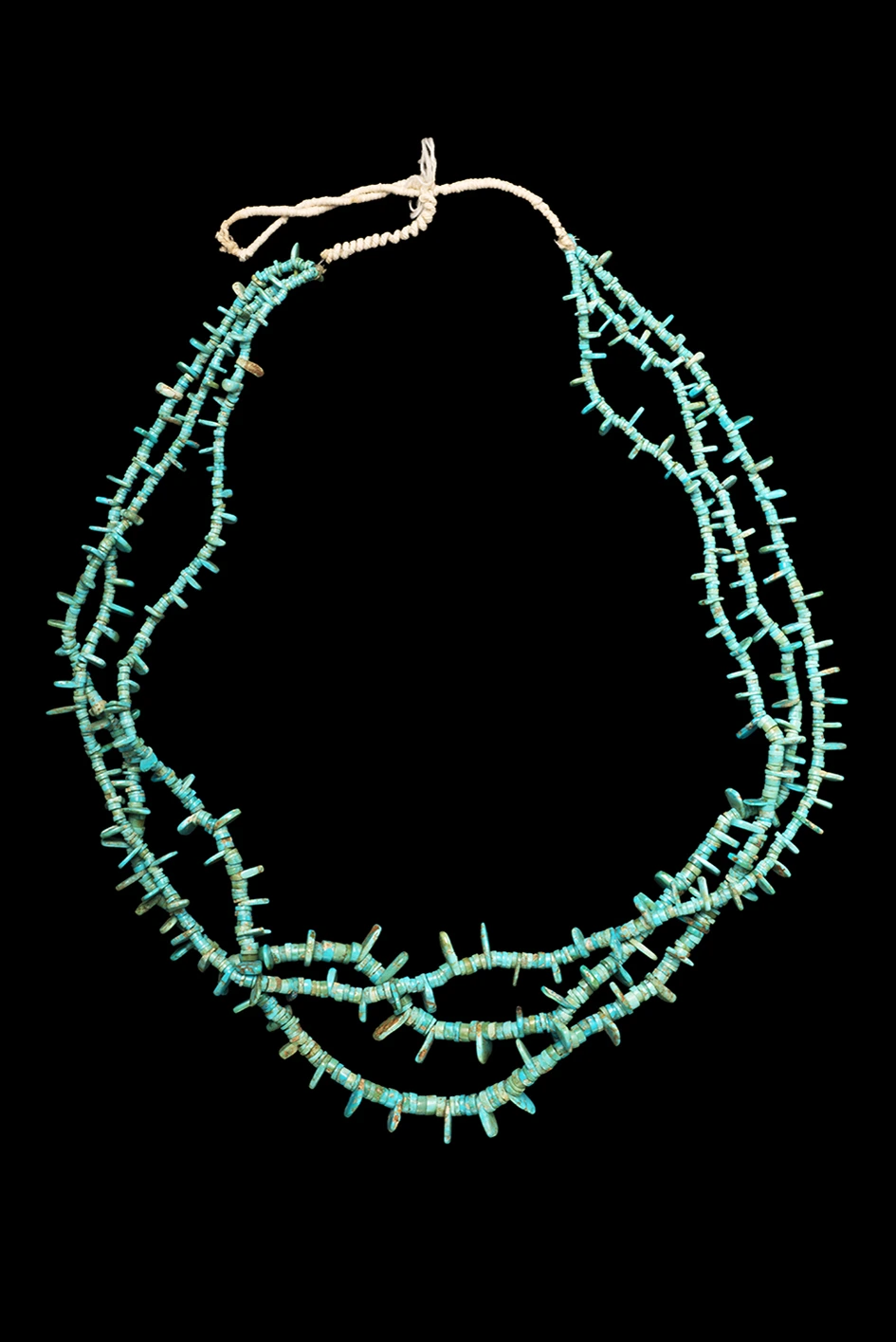In November 1949, Mr. Rey Romo chanced upon an unusual archaeological specimen on the west side of the Catalina Mountains in southern Arizona. This specimen consisted of a red-on-brown earthenware jar with a cover bowl of similar type. The jar contained approximately 100,000 beads of stone and between 25 and 30 small, spheroidal copper bells, each equipped with a ring eyelet for suspension.
The discovery was made on top of an isolated hill located about three miles north of Romero Canyon and just within the Coronado National Forest boundary (now within Catalina State Park). The Arizona State Museum was advised by Mrs. Eva Aguirre of this discovery in the fall of 1953...
READ MORE ABOUT THE ROMO CACHE
- The circumstances and contents of the Romo Cache were published in detail in this 1959 article: A Thirteenth Century “Strongbox”, by Emil Haury and Carol Gifford (Kiva, Vol. 24, No. 4 (Apr., 1959), pp. 1-11).
- The cache is referenced in the Winter 2013 issue of Archaeology Southwest Magazine, pages 15-16.
Visit Catalina State Park, the general area of the Romo Cache encounter: https://azstateparks.com/catalina/
The Huerfano Butte Cache (aka Bahti Cache)
On January 17, 1965, a young girl named Tani Bahti, on a picnic found what she thought at first to be a small grinding stone. It turned out to be a pottery jar with a bowl as a lid, containing 1,212 beads, 240 pendants, two domed beads, two frog pendants, one flat bead and one pendant fragment, all of turquoise, three carved glycimeris shell birds, one shell bead, and 36 perforated glycimeris shells. The cache dated to about 1100 CE based on the pottery jar and lid, both of which were identified as Gila plainware of the Rincon phase of the Hohokam culture. The site of the find is the southern face of Huerfano Butte, located west of the Santa Rita Mountains and several miles south of the mining town of Helvetia (excerpt from A Cache at Huerfano Butte by Mark Bahti).
Read the full article: A Cache at Huerfano Butte, by Mark Bahti (Kiva , Vol. 36, No. 2 (Winter, 1970), pp. 17-22.
Read About Two Additional Caches From Southern Arizona
Two Prehistoric Shell Caches from Southern Arizona (Flowing Wells Road and Flieger Ruin Caches), by Michael B. Stanislawski (Kiva , Vol. 27, No. 2 (Dec., 1961), pp. 22-27.






